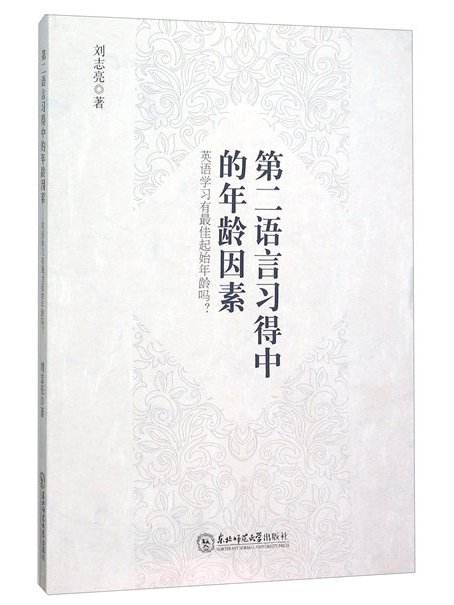《第二語言習得中的年齡因素》是2016年1月東北師範大學出版社出版的圖書,作者是劉志亮。
基本介紹
- 中文名:第二語言習得中的年齡因素
- 作者:劉志亮
- 出版社:東北師範大學出版社
- 出版時間:2016年1月
- 頁數:181 頁
- 定價:38 元
- 開本:16 開
- 裝幀:平裝
- ISBN:9787568112826
內容簡介,圖書目錄,
內容簡介
《第二語言習得中的年齡因素》通過討論兒童學習外語的語言學、心理學和生理學的理論依據,外語學習的環境及母語的重要性問題,就國內外語學習者日趨低齡化這一現象提出了一己之見。同時,調研從“問卷”和“學生成績”兩個方面對“國小開設英語課”進行了既有定性又有定量的綜合分析,得出了實證性的結論,使我們今後能以理性的態度去面對“國小開設英語課”這一現實問題。
圖書目錄
導讀
Chapter 1: Introduction
1.1 Background
1.2 The aims of the study
Chapter 2: Related Theories on FLES
2.1 Critical period hypothesis (CPH)
2.2 Non-critical period hypothesis
2.3 Piaget's theory on child language learning
2.4 Importance of mother tongue
2.5 FLES in China and its language environment
2.6 Clear-up of the key terms
2.6.1 Second language and foreign language
2.6.2 Acquisition and learning
2.7 The optimal age question
2.8 Summary
Chapter 3: Literature Review of FLES at Home and Abroad
3.1 Previous research into FLES abroad
3.1.1 First stage
3.1.2 Second stage
3.1.3 Third stage
3.1.4 Summary
3.2 Previous research into FLES in China
3.2.1 A brief history of FLES since the early 1960s
3.2.2 Three branches of viewpoints on FLES in China
3.2.3 Summary
Chapter 4: Analyses on the Results of the Questionnaires
4.1 Statistics on the views of the 32 students on FLES
4.2 Personal experience and original views from the students on FLES in China
4.2.1 Personal experience
4.2.2 Original views on FLES in China
4.2.3 Summary
4.3 Statistics on the views of the 32 parents on FLES
4.4 Original comments and views from the parents on FLES in China
4.4.1 Original comments on the questions
4.4.2 Original views on FLES in China
4.4.3 Summary
4.5 Statistics on the views of the 31 teachers on FLES
4.6 Original comments and views from the teachers on FLES in China
4.6.1 Original comments on the questions of the 31 teachers on FLES
4.6.2 Original views on FLES in China
4.6.3 Summary
Chapter 5: Analyses of the Students' Scores and the Tests
5.1 Average scores of the students in junior 1——3 and senior 1——2
5.2 Descriptive statistics of the scores
5.3 Paired samples test on the scores of junior 1——3 and senior 1——2
5.4 Summary
Chapter 6: Conclusion
6.1 Conclusion of the survey
6.2 Limitations of the survey and suggestions for its further research
Notes
Bibliography
Appendix
後記

